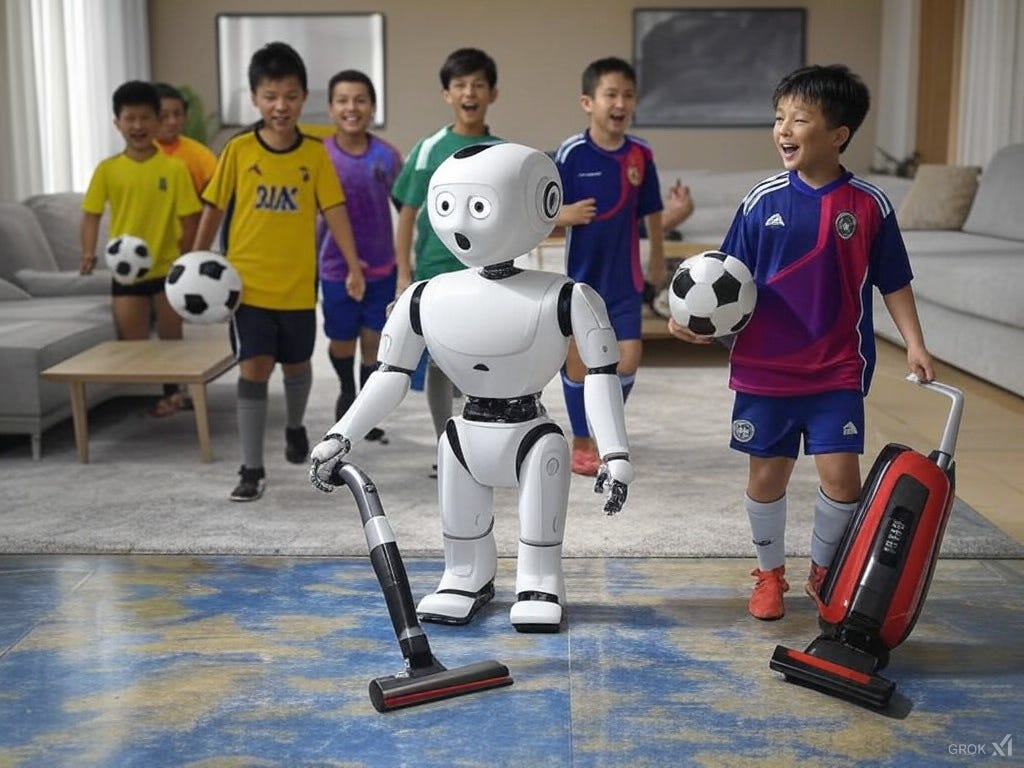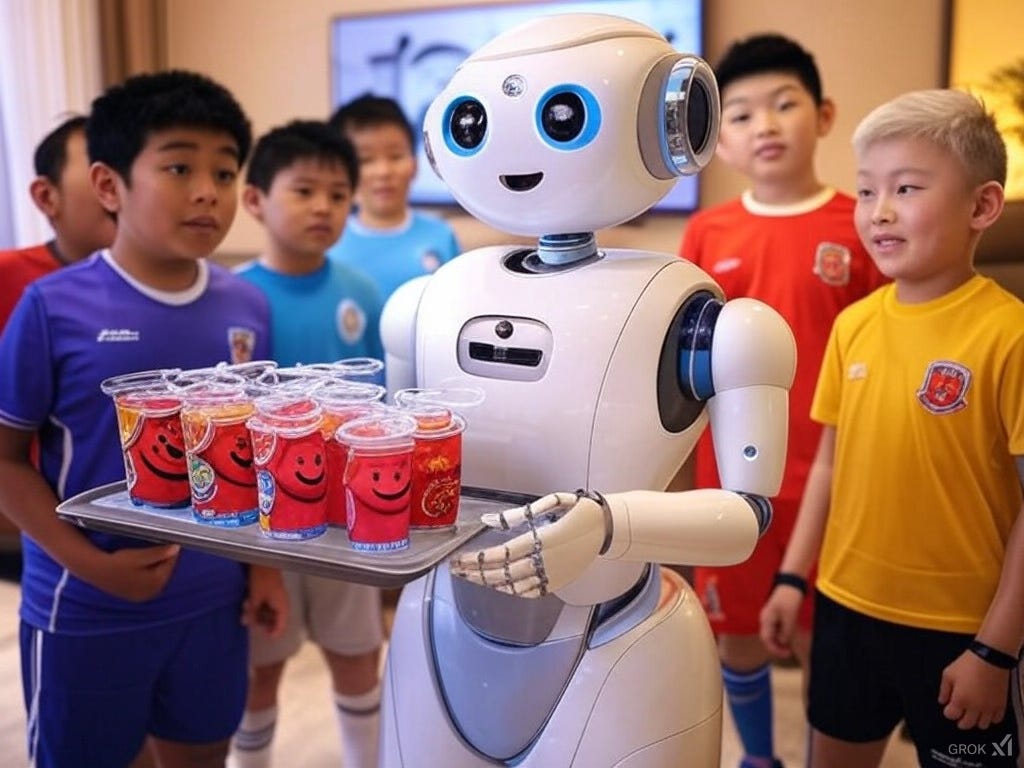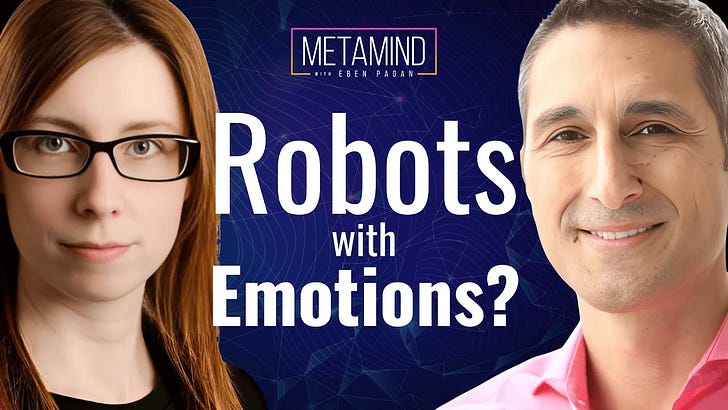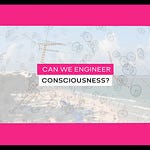This weekend, a great podcast dropped that I’d love for you to check out—Will Tesla Bots Become Conscious?—a conversation between my pal Herbert Ong and me.
Now, I’m not making any claims about Tesla! But we did have a fascinating discussion on why we don’t yet see millions of humanoid robots living and working among us. Or for that matter, why aren’t self-driving cars everywhere?
As the co-founder of two robotics companies—Kindred AI and Sanctuary AI—I’ve spent years building intelligent machines. I’m especially excited about what Sanctuary is doing lately, particularly with their intelligent robot hands with 21 degrees of freedom — perhaps the best in the world. My good friend James Wells is leading the company in great directions. Go Sanctuary! 🦾
But despite all the progress in robotics industry, I believe one crucial ingredient is still missing from artificial minds: conscious processing.
Why Consciousness Matters for Robots
My fascination with consciousness goes way back. In 2010, I gave this lecture at Caltech called Foundations of Artificial General Intelligence. My Manchester 🇬🇧accent was thicker… and this was still before OpenAI’s ChatGPT and prior to DeepMind’s AI learning to play Atari. For the next 15 years, I toiled in the technological trenches attempting to create human-like general intelligence.
Here’s what I’ve learned: making a robot do anything by itself is really hard. Autonomous systems require massive amounts of training data—millions, even billions of examples—just to learn predictable tasks.
That works fine in controlled environments. But what happens when a home robot, trained to vacuum floors, suddenly finds itself surrounded by a kids’ soccer team demanding something sweet to drink?
Chaos! The robot wouldn’t know what to do.
This is why I’m so interested in social robotics—AI systems in homes, schools, hospitals, and care facilities that interact with people in meaningful ways. If these robots are supposed to genuinely care about the people they interact with—not just mimic emotions or fake empathy—then they need to be conscious. There’s something inherently unsettling about a machine pretending to care, but having no real feelings. An LLM or a chatbot on a robot won’t make it truly empathise.
How Nirvanic is Tackling This Problem
At Nirvanic, we’re going back to basics — probing fundamental science about the nature of quantum consciousness and emotions. We’re transforming philosophy of mind into science, and if we’re successful, turning that knowledge into engineering and software products that would give conscious agency to AI systems.
We’re now running experiments with quantum computers and small robots searching for “non-random” signs of free will and agency at the deepest levels of physics. We won’t be building C-3PO overnight — this is early-stage research. But our ultimate goal is to create a foundational technology that will eventually allow humanoids to make free, conscious decisions, especially in unexpected, nuanced social situations.
Like when to put down the vacuum and hand out the Kool-Aid.
The home has been proposed as the ultimate test environment for general purpose robots. Every home is different, and interacting with one’s loved ones requires care and nuanced EQ. Ask any spouse!
Beyond emotional intelligence, real-world adaptability is a key challenge. The Wozniak Coffee Test, proposed by Ben Goertzel (and inspired by Steve Wozniak), is a practical benchmark for robotic Artificial General Intelligence. It suggests that a true AGI should be able to:
☕ Walk into an average home and make a cup of coffee, by:
Understanding the goal to make coffee
Perceiving and navigating an unfamiliar home
Identifying where objects are likely to be (coffee machine, mugs, sugar)
Adapting to unexpected situations (no coffee filters)
No robot today can pass this test. It may turn out that conscious processing will bridge the tech gap.
Exploring Quantum Consciousness
Does this mean we’ll reach the scale of human consciousness anytime soon? We’ll likely need a lot more qubits. Fortunately, billions of dollars are now pouring into the quantum industry. Share prices for Rigetti, D-Wave, and IonQ have all risen sharply on the NASDAQ and NYSE.
We want to ride this quantum investment wave to fuel our research into quantum conscious agency. If our conjecture is correct, we may be able to engineer a tiny spark of consciousness—something like what a single-cell organism has. And if you haven’t looked at a tiny paramecium under a microscope - you should. They’re capable of remarkable decision-making. 🔬
It took billions of years for evolution to transform the first spark of consciousness into human intelligence. Now, we may be on the cusp of giving that consciousness a new home—in social robots that, one day, we might call friends.
Suzanne










